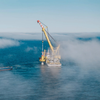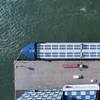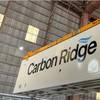ABS Revises Guide Operating in Low Temp
ABS has revised its comprehensive Guide for vessels operating in the Arctic and comparable harsh environments incorporating nearly four years of operational experience since the Guide was first issued in September 2006.
Drawing upon feedback from the industry, the ABS Guide for Vessels Operating in Low Temperature Environments was reviewed by members of ABS’ newly established Arctic Technical Advisory Committee comprised of prominent industry representatives active in harsh environment developments.
The unique demands imposed on vessels operating in polar regions are addressed in the Guide as well as guidance relating to personnel safety and training. Major sections include: materials, welds and coatings; hull construction and equipment; vessel systems and machinery; safety systems; crew considerations; and training and related documentation.
According to Robert Conachey, ABS Senior Managing Principal Engineer, Marine Technology, the major revisions include: updated notations to reflect occasional operation in low temperatures and continuous operation in the polar regions; clarification of requirements applicable to continuous service and occasional service in low temperatures; and references to regulations since the Guide was first published. Contact information for Administrations in Baltic, Arctic and Antarctic areas as well as meteorological organizations are included in the Guide.
Conachey points out a new notation for vessels with de-icing systems has been created and charts and tables have been updated. “Detailed colored temperature charts have been added in the climatic conditions appendix,” he said. “These charts can be used for guidance to determine temperatures to be expected when operating in the Arctic and Antarctic areas.”
Additionally, materials charts have been updated to reflect recent changes to the IACS Unified Rule (UR) S6. The charts now point out requirements for thick plates, castings and forgings. A new table has also been added listing various equipment and systems along with relevant temperature criteria and cross references.
Vessels designed and equipped in accordance with the optional requirements of the Guide are eligible for a special class notation. The notation CCO+(TDST, TMAT) will be listed in the ABS Record with the service and minimum temperatures for which the vessel is designed listed in the parenthesis. For example, CCO+(-30, -40 degrees C).
Other optional ABS class notations specified are: Cold Climate Operation (CCO (TDST, TMAT)), Cold Climate Operation – Polar (CCO-POLAR (TDST, TMAT)), Cold Climate Operation Plus (CCO (TDST, TMAT)+), Cold Climate Operation – Polar Plus (CCO-POLAR (TDST, TMAT)+) and DE-ICE.









